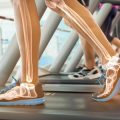Introduction to Postural Correction in the UK
Postural correction has become an increasingly prominent topic within the landscape of British health and wellbeing. Across the UK, awareness of the vital role that good posture plays in maintaining physical health and preventing discomfort is growing, particularly as sedentary lifestyles and technology use continue to shape daily routines. In British society, where work-from-home setups, extended commuting times, and digital engagement are prevalent, issues related to poor posture—such as back pain, neck strain, and reduced mobility—are more common than ever. This context has brought postural correction to the forefront of public discourse, positioning it as a key component not only of physiotherapy practice but also of everyday life. British physiotherapists are responding by championing evidence-based approaches that blend clinical expertise with practical strategies tailored to the unique rhythms and demands of life in the UK. From NHS settings to private clinics, these professionals are helping individuals understand why posture matters and how simple changes can make a significant difference to overall quality of life. As we explore evidence-based methods for postural correction throughout this article, we’ll reflect on both the scientific foundation and lived experience that inform best practices within the distinctive framework of British health culture.
Understanding Evidence-Based Practice in British Physiotherapy
When it comes to postural correction, British physiotherapists are guided by an unwavering commitment to evidence-based practice (EBP). In the UK, EBP is defined as the integration of the best available research evidence with clinical expertise and patient values. This approach, championed by professional bodies such as the Chartered Society of Physiotherapy (CSP) and the Health and Care Professions Council (HCPC), ensures that interventions are both effective and ethically sound.
Key Elements of Evidence-Based Practice
To fully grasp what constitutes evidence-based in a British context, it’s essential to consider three main pillars:
| Pillar | Description |
|---|---|
| Best Available Evidence | Utilising high-quality research, such as systematic reviews, randomised controlled trials, and UK clinical guidelines (e.g., NICE guidance). |
| Clinical Expertise | The physiotherapist’s accumulated skills, practical experience, and critical thinking developed through hands-on work within NHS or private clinics. |
| Patient Values & Preferences | Respecting each patient’s unique circumstances, beliefs, and goals during assessment and treatment planning. |
British Standards and Guidelines
The CSP and HCPC have set rigorous standards for physiotherapists in the UK. These include staying updated with current research, engaging in continuous professional development (CPD), and applying clinical reasoning that aligns with evidence-based protocols. Notably, guidelines from the National Institute for Health and Care Excellence (NICE) play a pivotal role in shaping postural correction strategies across British healthcare settings.
The Practical Application
In my own practice, I’ve seen how following these standards translates into improved outcomes. For instance, when addressing postural issues like forward head posture or scoliosis, I rely on both peer-reviewed studies and tried-and-tested manual therapy techniques, all while discussing options transparently with my patients. This holistic yet structured method is what sets British physiotherapy apart—blending science with personal care to foster real-world results.

3. Common Postural Issues Seen Across the UK
British physiotherapists are frequently confronted with a distinct set of postural problems that reflect both the country’s occupational trends and its unique lifestyle factors. One of the most common issues is “tech neck,” arising from prolonged use of digital devices in offices, homes, and even on public transport. The prevalence of sedentary office jobs across the UK – from finance professionals in London to council workers in Manchester – means many people spend long hours hunched over computers, which leads to rounded shoulders and forward head posture. Additionally, British weather plays its part: damp, cold conditions often encourage slouching or curling up for warmth, exacerbating poor spinal alignment. Physiotherapists also note an increase in lower back pain among those who commute long distances by car or train, particularly around major cities where traffic congestion can mean hours spent sitting daily.
Manual labourers, such as construction workers in Birmingham or dockworkers in Liverpool, face their own set of challenges. Repetitive lifting and carrying without proper ergonomic training often results in muscular imbalances and chronic strain. Retail staff and NHS workers frequently report foot, knee, and hip discomfort due to standing for extended periods on hard flooring – a scenario all too familiar in bustling high streets and hospitals across the country. Even cultural habits contribute: many Britons relax at home with legs tucked under or slouched on sofas while watching television or reading, further reinforcing suboptimal postural patterns over time.
These everyday realities highlight the importance of tailored, evidence-based assessment by physiotherapists who understand not only anatomy but also the context of British life. By recognising these recurring patterns and their root causes – whether occupational, environmental, or cultural – therapists are better equipped to design interventions that address the real-world needs of their patients throughout the UK.
4. Techniques and Approaches Backed by British Research
In the UK, physiotherapists take pride in their meticulous, evidence-based approach to postural correction. The foundation lies in comprehensive assessment, often using validated tools such as the Modified Oswestry Disability Index or the Roland-Morris Questionnaire. These instruments help practitioners quantify baseline function and monitor progress over time, ensuring interventions are both targeted and measurable.
Assessment Strategies in British Practice
Assessment is never a one-size-fits-all affair. British physiotherapists typically combine observational analysis with functional movement tests, palpation, and sometimes digital posture analysis systems. This holistic method not only pinpoints postural deviations but also uncovers underlying contributors such as muscle imbalances or lifestyle factors—a crucial step highlighted in local studies published in the Physiotherapy Journal.
| Assessment Tool | Purpose | Common UK Usage |
|---|---|---|
| Modified Oswestry Disability Index | Quantifies disability due to lower back pain | Initial and ongoing measurement for tailored plans |
| Functional Movement Screening (FMS) | Assesses quality of basic movements | Identifies faulty patterns needing correction |
| Digital Posture Analysis | Objective posture tracking with tech support | Mainly used in larger NHS trusts and private clinics |
Intervention Strategies Supported by Local Findings
The British approach favours personalised intervention combining manual therapy, exercise prescription, education, and ergonomic advice—often delivered through a biopsychosocial lens. Clinical findings from UK-based research stress the importance of graded exercise programmes focusing on core stability and postural endurance rather than quick fixes. Group Pilates classes and Alexander Technique sessions are also widely recommended for long-term maintenance, with several NHS trusts integrating these into community programmes.
Preferred Interventions Among UK Physiotherapists:
- Manual Therapy: Mobilisation and soft tissue work to address joint restrictions and muscle tightness.
- Bespoke Exercise Plans: Strengthening underactive muscles (like deep abdominals) while stretching overactive ones (such as hip flexors).
- Patient Education: Empowering patients to recognise poor habits and self-manage outside the clinic.
- Ergonomic Adjustments: Advising on workstation set-up based on HSE guidelines to promote healthy alignment at work.
- Pilates & Mind-Body Classes: Used as adjuncts for reinforcing good posture in daily life.
The Impact of an Evidence-Based Approach: A Personal Reflection
Drawing from my own clinical journey across NHS settings, I have seen first-hand how this structured yet adaptable approach fosters genuine change. By rooting assessments and interventions in robust British research, we not only deliver best practice but also build trust—crucial for patient engagement and long-term success.
5. Practical Insights and Experiences from British Physiotherapists
When it comes to postural correction, the realities of clinical practice in the UK often differ from textbook scenarios. Many British physiotherapists emphasise that there is no one-size-fits-all approach, as each patient’s lifestyle, work environment, and physical habits are unique. For instance, Emma Clarke MCSP, a senior physiotherapist in Manchester, shares that many of her clients are desk-based workers. She finds that simple, consistent interventions—such as encouraging micro-breaks every 30 minutes and teaching patients how to adjust their workstation ergonomically—have a greater impact than prescriptive exercise plans alone.
Case-Based Learning: What Actually Works?
Drawing from hands-on experience, practitioners like Tom Jones CSP in Birmingham advocate for combining manual therapy with patient-led education. He notes that while manual techniques can offer immediate relief, long-term postural improvement hinges on helping patients understand how daily habits contribute to musculoskeletal issues. Tom often uses real-life analogies relevant to British lifestyles, such as comparing poor sitting posture during a long train commute to slumping on a sofa at home, making his advice relatable and actionable.
Tailoring Advice for Everyday Life
British physiotherapists stress the importance of tailoring recommendations to fit local routines and environments. For example, suggesting walking meetings or standing desks may be more feasible in modern UK offices compared to traditional settings. Furthermore, therapists like Sara Patel MCSP in London recommend using smartphone reminders or smartwatches—common among UK office workers—to prompt regular movement and posture checks.
Top Tips from the Clinic Floor
- Pace Yourself: Physiotherapists encourage gradual changes rather than radical overhauls. Trying to ‘fix’ posture overnight is unrealistic; small, sustainable adjustments work best.
- Empowerment Over Perfection: Many UK clinicians focus on empowering patients to make informed choices rather than chasing perfect alignment.
- Cultural Sensitivity: Recognising cultural habits—like tea breaks or cycling commutes—helps tailor strategies that genuinely fit into British lifestyles.
These real-world insights highlight the value of evidence-based approaches being adapted by experienced UK physiotherapists to suit the genuine needs and expectations of their patients.
6. Challenges and the Future of Postural Correction in Britain
Despite the progress made in evidence-based postural correction, British physiotherapists continue to face a number of ongoing challenges. One of the most pressing issues is public awareness; many individuals still underestimate the impact of poor posture on long-term health, leading to late intervention and entrenched habits that are harder to correct. Additionally, there remains a lively debate within the UK physiotherapy community regarding the most effective balance between manual therapy, exercise prescription, and digital interventions. Leaders such as those from the Chartered Society of Physiotherapy (CSP) highlight the need for a personalised approach that reflects both scientific evidence and individual patient needs.
Obstacles in Clinical Practice
Clinicians often encounter resistance from patients who expect quick fixes or who struggle with adherence to prescribed exercise routines. Moreover, NHS resource constraints sometimes limit access to regular physiotherapy sessions, making it harder to deliver consistent, long-term support. The integration of technology—such as telehealth consultations and wearable posture monitoring devices—offers promise but also raises concerns over accessibility and digital literacy among older adults.
Debates on Best Practice
The profession continues to debate the relative merits of traditional hands-on techniques versus newer evidence-based strategies. Some practitioners advocate for a holistic approach that incorporates lifestyle advice, ergonomics, and psychological support alongside physical rehabilitation. Others stress the importance of robust outcome measures and clinical trials to validate emerging methods before widespread adoption.
Looking Ahead: Future Directions
Forward-thinking physiotherapists in Britain are calling for greater emphasis on prevention through public health campaigns and education initiatives targeting schools and workplaces. Collaborative research projects across universities and NHS trusts are focusing on refining assessment tools and tailoring interventions for diverse populations. As remote working becomes more common, there is an urgent need for adaptive solutions that fit modern lifestyles. Ultimately, the future of postural correction in Britain hinges on a blend of tradition and innovation—grounded in rigorous evidence but responsive to changing societal needs.


